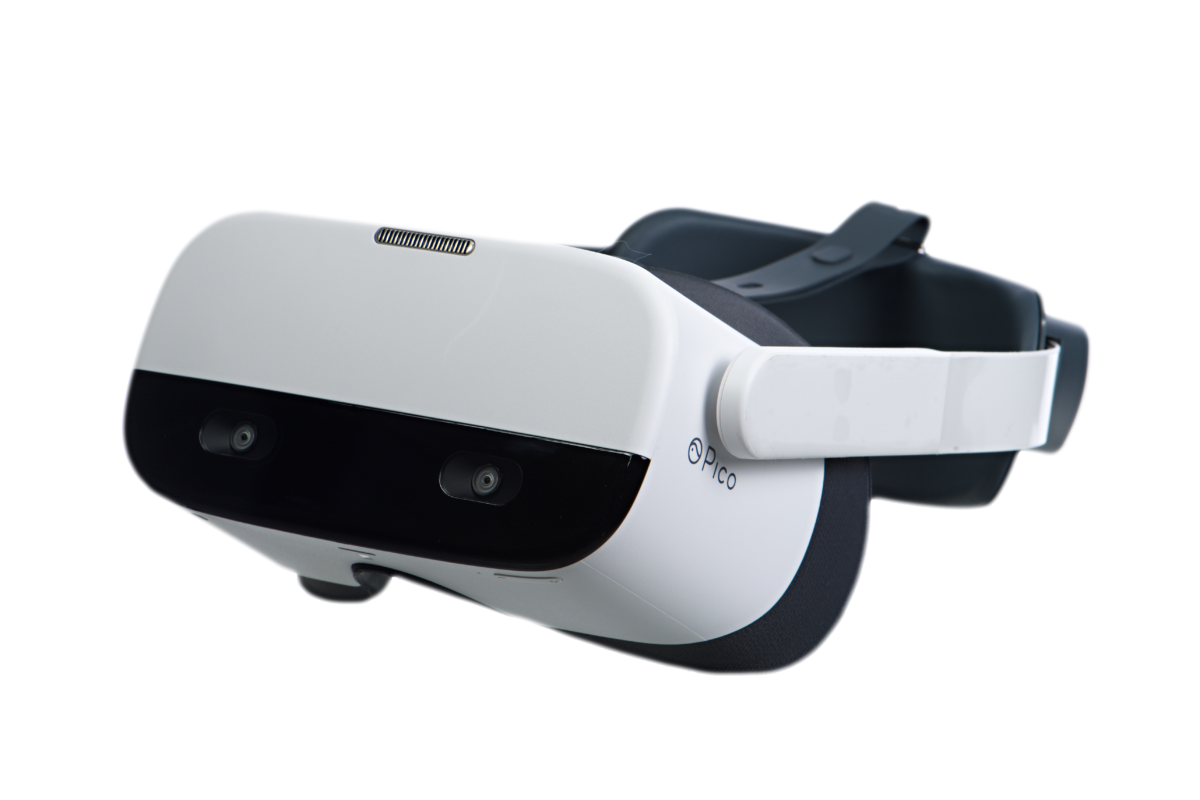Many training managers are pondering this simple question: Is my business ready for virtual reality training?
But the real questions (read: fears) lurking in the back of their minds are:
- What the heck is virtual reality-based training?
- What would it look like in practice?
- What fancy equipment do I need even to pull it off?
- And, of course, what kind of budget do I need?
Well, today is your lucky day. We’re going to answer all of those hidden, but crucial questions, so that you can bring VR Training into your program in an informed way.
What is Virtual Reality-Based Training?
The name — virtual reality-based training — largely self-defines this emerging training methodology.
Virtual Reality Training is a technology-based training method that uses computer software and special sensory hardware to recreate real environments and scenarios. These virtual environments allow students to engage in fully immersive, realistic, and interactive virtual training scenarios.
Most importantly, VR Training can effectively simulate on-the-job style training in a safer and more forgiving environment, while giving trainers the kind of visibility and control they’ve long desired in their training exercises.
Explaining virtual reality on an even more practical level, a training setup generally consists of one or more dedicated high-performance (but standard gaming-grade) computer workstations, a quality VR headset (HP Windows Mixed Reality, HTC Vive or Oculus Rift), and a couple of motion-tracking sensors, (depending on the headset you’re using. In the case of the HP Windows Mixed Reality headset mentioned above, “standalone” headsets are also becoming available which deliver a great VR experience without needing light tower-tracking).
This low-profile technology can be installed in a relatively small training area (as little as 100 square feet — a 10’ x 10’ square), in the corner of an office, training room, or even on-site job trailer, and just like that: you’re ready to train in virtual reality.
With this simple and inexpensive setup and a VR Training software module, (which is roughly equivalent in difficulty to ordering and installing a video game), you’re ready to host your first virtual reality-based training session.
The best thing about using VR Training instead of, or in conjunction with, the typical snooze-fest PowerPoint dirge through training talking points and objectives, virtual reality gets each student mentally and even physically involved, actively challenging them to do the training they would otherwise be (mostly) passively learning about.
Critically, despite needing some amount of hardware to take full advantage of the experience, there’s no “downtime”. Even when the students aren’t in the virtual training environment themselves, they can remain mentally and emotionally engaged as they watch and learn from the photo-realistic successes and failures of their classmates on the screen (or on a recorded video).
Rather than simply wait for their turn, they can learn and troubleshoot for themselves as they watch how co-workers successfully or unsuccessfully complete their virtual jobs.
Benefits of Using Virtual Reality in Training
As we’ve defined the term ‘VR Training’, we’ve touched on several of the benefits of using it for your workforce. Now let’s break down some of the most important of those benefits so you can build a business case for leveraging VR in your company’s training program.
Engaging and Interactive
No more sitting in rows of cramped, grade school-style desks, watching an instructor drone their way through slides filled with regulatory-speak in the vain hope that someone is paying attention.
Virtual reality-based training gets folks out of their seats and participating in real-life training scenarios. Even those watching outside of the virtual reality “hot-seat” are still engaged, if for no other reason than the excitement and novelty of the training medium itself. There’s no shame in admitting that something serious like training can also be fun.
Controlled, Specific, and Forgiving
One of the most significant benefits of virtual reality is the amount of control you have over training and practice scenarios.
You can create a training environment customized to your specific business’ needs. Your VR Training can be designed to replicate actual jobs, situations, or even a particular job site or project. Add in hazardous materials, specialized equipment, and a variety of unexpected twists and turns, and you have real on-the-job training — all without the dangers of on-the-job training.
Furthermore, because it’s software you can program your training scenarios to focus on specific problem areas or unique challenges expected from an individual worker or an actual project.
Higher Retention Rate
Retention is always a training priority, and virtual reality has been scientifically proven to help with retention.
This positive retention rate makes a lot of sense if you’ve ever experienced a virtual training session or even a virtual reality game; it’s why some call our field “serious gaming”. VR Training transports the trainee into a realistic environment and makes them an active participant in the experience, less a ‘student’ than a ‘player’.
Virtual reality lets you see, hear, and react to scenarios, making your training feel as real as real can be. Trainees retain more because they will have to assess what’s going on around them, make decisions, and suffer the consequences — they have to use more of their minds (and even bodies).
When presented with new concepts and ideas in vivid interactive 3D, they can’t just sit there and pretend to pay attention, they’ll have to get involved. What’s more, they’ll actually want to.
Beyond the mental side of retention, VR delivers on sense-memory. When trainees actively participate in this kind of hands-on training, they’ll only need to practice most things a few times before they acquire that new skill.
Efficiently Train Every Worker
One of the great things about Virtual Reality Training is that you can do it from anywhere. This feature gives you the opportunity to make sure that every single worker has a chance to get realistic, virtual training — no matter where they are.
With PIXO VR’s multi-user functionality, not only can they train from anywhere, they can all do it in the same virtual setting at the same time. This helps build chemistry and team skills, fostering collaboration and even enabling a little friendly competition, driving everyone to be better.
All of your VR Training sessions can also be recorded and made available in a library of videos that demonstrate your training objectives, even if every employee doesn’t have access to the hardware at that moment.
Critically, VR has also made training itself more efficient.
VR has proven to reduce the time needed to train, allowing users to master skills quicker. Research has shown that trainees learn the same material in 40-60% less time with VR as opposed to more traditional forms of training.
Cost Effective
Cost is one of the most important, if somewhat overlooked benefits of VR Training. Although there are some upfront investments, compared to traditional training that often requires paid instructors, travel expenses, and even specialized training equipment and facilities — VR Training can yield a much higher return on investment.
Perhaps the most significant financial return can be found in the ongoing value provided by greater institutional self-knowledge, delivered in aggregate training data.
VR provides a degree of visibility into employee capabilities — at both the individual and team-level — that, until now, training managers and employers could only dream about.
With robust data capture mechanisms and real-time reporting and analytics, VR can make an entire training program — including parts of the program that aren’t even leveraging virtual reality — more efficient and cost effective by revealing the programs strengths and weaknesses over time.
After all, who can say precisely how much capital a business loses annually by misunderstanding (or outright not knowing) what its employees do best and where they need some work — before an accident or production mishap takes place?
If information is power, VR Training is far more empowering for enterprise than traditional training methods.
Five Steps to Launch Your First VR Training Solution
Now, with a solid understanding of the benefits of virtual reality-based training, it’s time to help you build a business case for VR Training to sell internally, so you can become the hero of your training program.
Let’s begin that business case by outlining a practical path to launching that very first VR training session.
1. Start with a Real Business Problem
When considering VR Training, many wonder where to start. That’s why I encourage companies to begin by identifying a real business problem. Identify an area of your company where performance or training is lacking. In so doing, you’ll give your VR Training program an opportunity to be applied where it can bring the most immediate value and clearly demonstrate its usefulness.
In the area of construction training, we often see companies starting with our fall protection VR Training module.
Fall hazards are one of the most frequent and fatal construction accidents. At the same time, it is difficult and costly to provide adequate prevention training. Fall protection training is a perfect example of when VR Training could be the most effective training solution.
2. Begin with a Specific Training Module
At the beginning of piloting a new VR Training program, I also recommend starting with a specific training objective and a module or lesson to accomplish it.
Don’t try to replace your whole training program or satisfy every possible learning objective with virtual reality; while anything that can be taught can be virtualized, there are still places where traditional training may make more sense, or be more cost-effective.
Introduce virtual reality as an alternative or complementary training method within a more extensive training curriculum, rather than attempting to “rip and replace” your entire program.
3. Have a Well-Defined Learning Objective
Since VR Training is going to be a “radical” new approach in your training system, it’s essential to apply it against a specific learning objective.
We started by identifying a clear problem within your business’ training program. Next, we thought of one aspect of that problem where virtual reality might make the most sense as a solution.
Now, we want to be able to actually demonstrate that virtual reality is directly meeting a specific training goal. So set your goals ahead of time. VR Training isn’t a magic bullet — it’s a tool, and like any tool, how you actually use it counts.
4. Required Technology
At this point, make sure you have all of the right equipment to deliver an excellent VR Training experience for your employees.
The good news on this front is that virtual reality has become very accessible. Mainstream computers, graphics cards, and processors, as well as the VR headsets themselves, have become so powerful and affordable that budget is rarely a barrier to implementing VR Training.
Here is a typical VR Training technology wishlist:
Recommended VR Headset(s)
Computer Specifications
| Processor | Intel(r) Core(TM) i5-4590 or AMD FX(TM) 8350, equivalent or better |
| Graphics | NVIDIA(r) GeForce(r) GTX 1060 or AMD Radeon(TM) RX 480, equivalent or better. |
| Memory | 4 GB RAM or more |
| Video output | DisplayPort 1.2 or newer |
| USB | 1x USB 3.0 port or newer |
| Operating System | Windows 10 |
For the most current computer specs, double-check the latest specifications for HTC Vive or Oculus Rift support websites.
That’s it! For less than $2,000 you’re ready to set up a virtual reality training studio in that bleak – dreaded – traditional classroom. What’s more, you’ll have people begging to sign-up for training, instead of finding reasons to avoid it.
5. Find and Implement, then Measure and Improve
Now, for the purposes of time, we’re mainly skipping past the “find and implement” part where you shop around for, find, and decide upon a Virtual Reality Training provider to supply you with a solution, (something we at PIXO VR would be more than happy to discuss with you, should you be at this stage of the process right now.)
For now, we’ll cut to the chase and assume you’ve found a VR Training company and have integrated their solution into your curriculum, applied to a specific module, and serving a particular learning objective.
This part is key: make sure you measure the results!
Are your trainees doing better on practical assessments? Are they retaining the information? Are you noticing better outcomes on projects that require the skill you trained for using virtual reality? Importantly, do you know how they were doing before?
Even if you don’t have much hard data from the past, document as much Before & After information as possible so you can get a proper apples-to-virtual-apples comparison of the pre- and post-VR Training status quo. The results will be eye-opening.
Next Steps

PIXO Has Improved VR Management to One Easy Step


Leave a Reply
You must be logged in to post a comment.